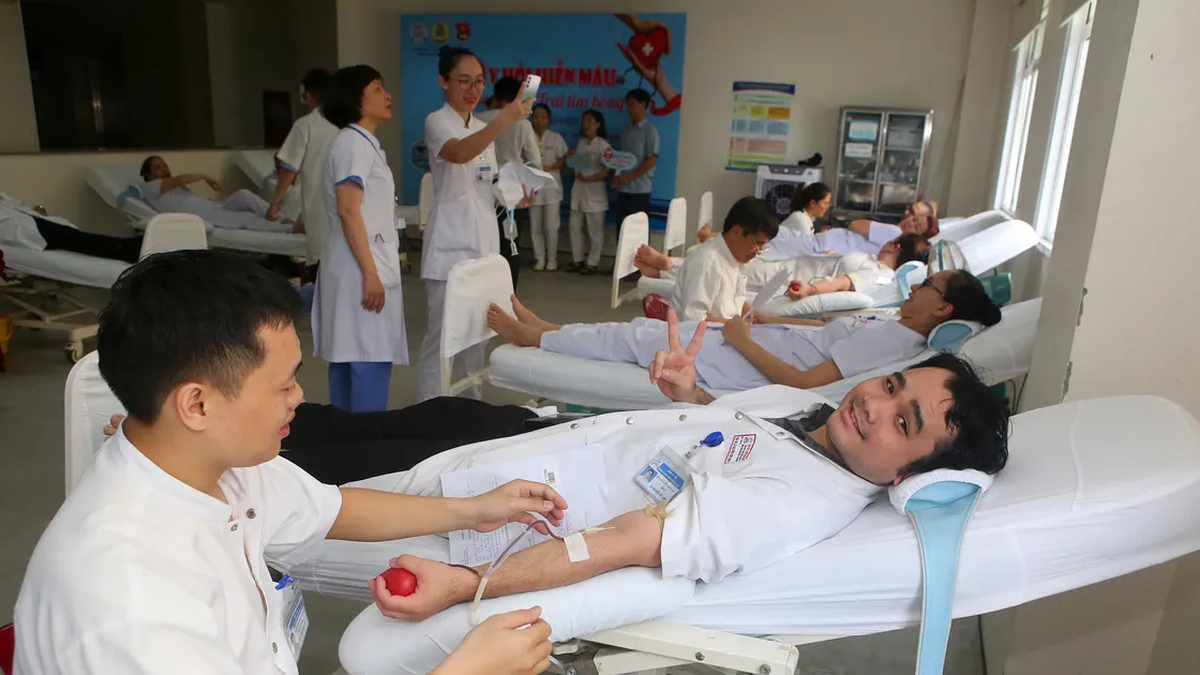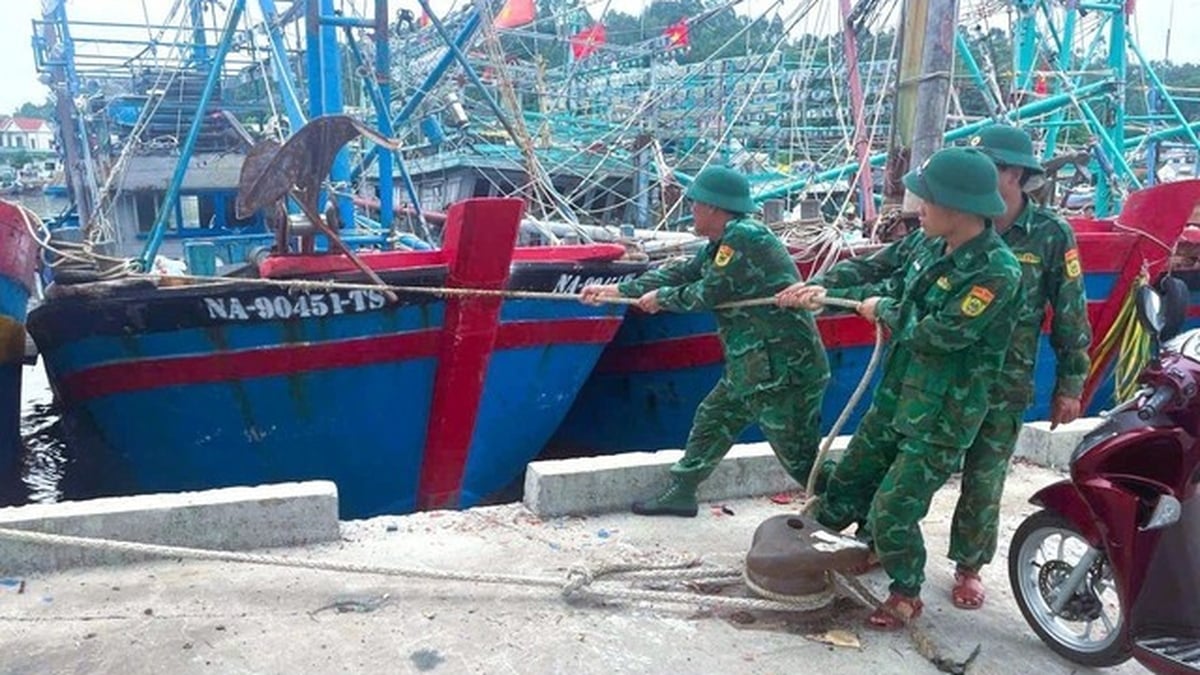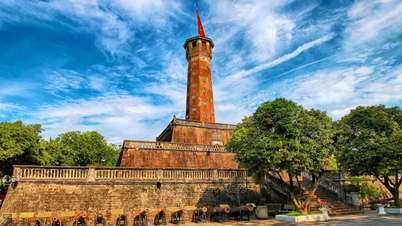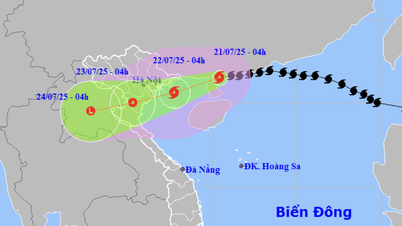Among the world's top three rice exporting countries, Vietnam has had the most stable output over the past 30 years, even during the El Nino period.
For the first time in 15 years, Vietnam’s rice export price has exceeded $600 per ton since early August, while the global food supply chain has been disrupted by bans imposed by India, the UAE, and Russia. These countries share the same concern about crop failure due to the El Nino phenomenon - a climate pattern characterized by increased sunshine and less rain - that has appeared since June.
While Russia and the UAE occupy a "small piece of the pie" with a total rice export volume of less than 300,000 tons per year, India is the largest rice exporter - nearly 22 million tons per year, accounting for 40% of the market share. The country of a billion people announced a ban on the sale of all types of rice, except Basmati, causing a loss of about 15% of the total global rice trade. This gap has become an opportunity for the remaining rice exporting countries.
Vietnam was quick to seize the opportunity. Last week, The Department of Crop Production under the Ministry of Agriculture and Rural Development announced that it will increase the autumn-winter rice growing area in the Mekong Delta - the country's largest rice granary - by 50,000 hectares compared to the plan at the beginning of the year, to 700,000 hectares.
Meanwhile, Thailand has announced that it will “not restrict exports to take advantage of current rice prices.” However, the country is still encouraging rice farmers to switch to other crops that require less water to face the risk of drought caused by El Nino.
Since 1990, El Nino has occurred nine times globally, according to the US Meteorological Agency, causing many extreme weather events that negatively impacted the agricultural sector.
In India, the two biggest declines in rice production over the past three decades were in 2002, when it was minus 23%, and in 2009, when it was minus 8%, both during El Nino periods. Similarly, Thailand also witnessed three declines in rice harvests of over 10% in 2014, 2015, and 2019, all years with El Nino.
Vietnam's rice crop has proven to be more resilient. Over the past 30 years, the average yield has increased by 2.5% per year, higher than India (1.8%) and Thailand (2.2%) and has also seen the least fluctuations. The worst year for Vietnamese rice was the El Nino period in 2016. At that time, the Mekong Delta - the rice granary that accounts for 55% of the country's output - experienced a historic drought and salinity that caused 160,000 hectares of land to become saline. The country's total rice harvest fell by 4%, still much lower than the double-digit negative growth records of India or Thailand.
Professor Vo Tong Xuan, a leading expert on Vietnamese agriculture, said that the rice-growing area that ensures food security in the Mekong Delta is located along the Cambodian border, about 1.5 million hectares wide, stretching through the provinces of Long An, Dong Thap, An Giang, and Kien Giang. As the place where the Mekong River flows into Vietnam, and has a large irrigation canal system such as Vinh Te and Trung Uong, this area always has enough fresh water for rice plants. "We can rest assured about food security," said Professor Xuan.
According to Professor Xuan, the water in the Mekong Delta is almost at the same level as the rice fields. In contrast, Thailand also has the Mekong River flowing through it, but it is much lower than the ground, making it more difficult to pump water to the fields. Therefore, when the El Nino phenomenon occurs, leading to drought and reduced rainfall, the risk of water shortage for irrigation in Thailand is higher than in Vietnam.
Another major change is that after the Government's resolution on sustainable development of the Mekong Delta in response to climate change in 2017, coastal areas that are often affected by salinity can only grow high-yield rice in the rainy season, taking advantage of fresh water sources. In the dry season, people no longer grow rice but instead bring salt water into their fields to raise shrimp in a "natural" way.
"The above changes help reduce damage during subsequent droughts and salinities, while production efficiency is higher," said Professor Xuan. In addition, according to him, domestic rice varieties can be harvested after three months, so a maximum of three crops can be grown a year. Meanwhile, varieties from India and Thailand have a life cycle of four months, so a maximum of two crops can only be grown. Therefore, Vietnam's rice productivity is also better.
In fact, Vietnam’s rice productivity has been steadily increasing in the 2017-2021 period, exceeding 6 tons per hectare. According to data from the Food and Agriculture Organization of the United Nations (FAO), this is twice as high as Thailand’s and 40% higher than India’s.
Meanwhile, Dr. Tran Ngoc Thach, Director of the Mekong Delta Rice Research Institute, said that Vietnam is not immune to El Nino but is ready to adapt. He cited that after the historic drought and salinity in 2016, the West had many more large irrigation projects such as freshwater reservoirs and saltwater prevention sluices. In 2019, when El Nino returned, the rice output of the West decreased by 1%, much lower than the minus 7% three years earlier.
Currently, Vietnam's climate has not been unusual, while India has experienced severe weather due to El Nino since April, forcing the country to take early action. According to Mr. Thach, this is a favorable condition for Vietnam to increase rice exports, benefiting from high prices when India temporarily stops "playing".
"This is an opportunity for Vietnam to position itself as a stable rice supplier to the world, increasing its reputation in the market," said Dr. Thach, adding that with the advantage of having shorter-term rice varieties than other countries, Vietnam should flexibly increase its planting area. At the same time, farmers should adjust their winter-spring crop sowing schedule earlier to avoid damage when El Nino strongly affects the South and Central Highlands from the end of the year, according to forecasts from the meteorological industry.
On a global scale, Vietnam is also ranked highly in terms of regional food security, according to statistics from The Economist - a prestigious British economic magazine. Based on criteria of availability, affordability, sustainability, quality and safety, Vietnam ranks 7th in Asia and highest in the group of lower-middle income countries. Meanwhile, Thailand ranks 9th, and India is at 11th.
According to FAO, on average, each Vietnamese person has more than 206 kg of rice, equivalent to about 103 kg of rice for consumption in a year, after excluding other uses of rice (seed, animal feed, industrial food production, export). This figure is 1/4 more than Thailand, and double that of India.
Meanwhile, each Vietnamese person eats an average of only 6.9 kg of rice per month, equivalent to 83 kg per year and is on a downward trend, according to the latest survey by the General Statistics Office. That is, the surplus of rice is about 20 kg per person.
"Overall, we are not worried about rice shortages, but we are only afraid that speculation could push rice prices up temporarily in some localities, causing losses to domestic consumers," Mr. Thach said, citing a similar situation that occurred in 2008 when people rushed to stockpile rice after the export ban.
Following the announcements from India, Russia, and the UAE, domestic rice prices are now rising rapidly. In Ho Chi Minh City, fragrant rice has increased by VND2,000 compared to last week, to VND18,000-25,000 per kilogram. In the West, traders come to the fields to compete to buy rice, many export companies have paid deposits to farmers, falling into a difficult situation when the field owners are willing to pay the contract to sell at a higher price.
This year, Vietnam is expected to produce over 43 million tons of rice. Of this, about 14 million tons (equivalent to 7 million tons of rice) will be for export, and 18 million tons will serve domestic demand, including reserves.
Faced with the current potential, the Prime Minister on August 6 issued a directive requiring localities to take advantage of the opportunity to increase rice exports, but still ensure food security, and strictly handle cases of speculation, unreasonable price increases, and instability.
Vietnamese German
Source link




























![[Photo] National Assembly Chairman Tran Thanh Man visits Vietnamese Heroic Mother Ta Thi Tran](https://vphoto.vietnam.vn/thumb/1200x675/vietnam/resource/IMAGE/2025/7/20/765c0bd057dd44ad83ab89fe0255b783)





































































Comment (0)